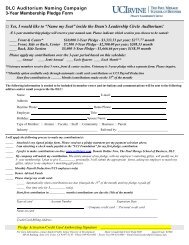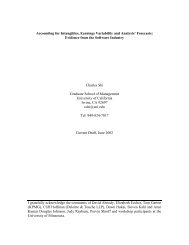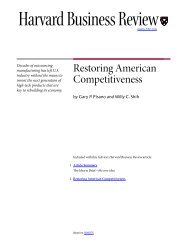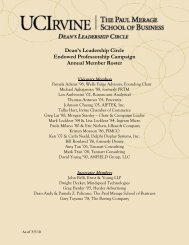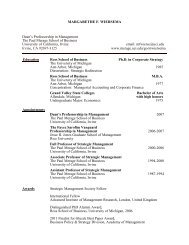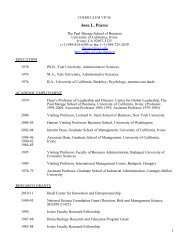View Carlson-Titman-Tiu Paper - The Paul Merage School of Business
View Carlson-Titman-Tiu Paper - The Paul Merage School of Business
View Carlson-Titman-Tiu Paper - The Paul Merage School of Business
You also want an ePaper? Increase the reach of your titles
YUMPU automatically turns print PDFs into web optimized ePapers that Google loves.
where the function φ R satisfies the following:<br />
V R (r, L) = LφR(r),<br />
V P (r, L) = L/(r ∗ − µL).<br />
1. <strong>The</strong>re exists two constants 0 ≤ r < r ≤ ∞ such that if r ∈ (r, r) the function φR satisfies:<br />
σr(r) 2<br />
2<br />
φ ′′ R(r) + [µr(r) + ρσLσr(r)]φ ′ R(r) − rφR(r) + 1 = 0 (7)<br />
2. At r = r institutions purchase public assets and hold them privately. <strong>The</strong> function φR satisfies:<br />
φR(r) = 1/(r ∗ − µL) − cRP<br />
φ ′ R (r) = 0.<br />
3. If at r = r the function ˆ φR satisfies the following conditions:<br />
1/(r ∗ − µL) = φR(r) − cP R<br />
φ ′ R (r) = 0,<br />
then REITs purchase privately owned assets. If those conditions are not met, no privately<br />
held assets become public.<br />
4. Supply <strong>of</strong> private capital to the REIT sector at rt = r (if conversions occur) and the demand<br />
for assets held by REITs at rt = r maintain the public discount rate rt in the interval [r, r].<br />
That is, there exist two stochastic processes D and U such that:<br />
D, U are almost surely increasing.<br />
dD, dU are almost surely equal to zero on the interval (r, r).<br />
<strong>The</strong> equilibrium public discount rate r eq is given by:<br />
dr eq<br />
t<br />
and satisfies r eq<br />
t ∈ [r + µL, r + µL] for any t.<br />
eq<br />
eq<br />
= µr(rt )dt + σr(rt )dWt + dDt − dUt<br />
8<br />
(6)<br />
(8)<br />
(9)






